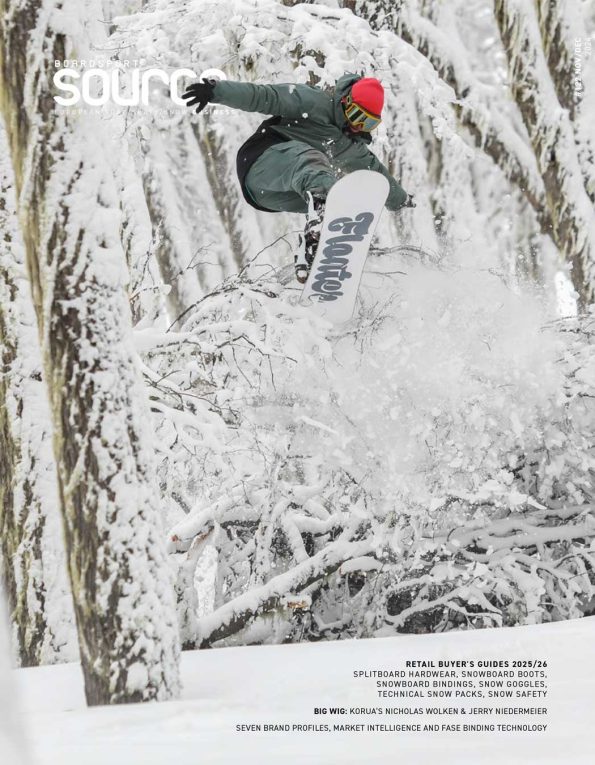Zero G, Chamonix, France, Retailer Profile
Zero G, Chamonix is one of France’s leading core snowboard shops, now in its 26th year and takes this issue’s Retailer Profile as a business with its finger on the pulse of both the local Chamonix scene and the wider snowboarding community. Zero G’s management team talks us through the benefits of an online store, how the average snowboard consumer has evolved and how to define your shop’s image.
Please give a brief history of your store.
We’ve been in Chamonix since 1987. Before owner Martin Green moved here he was a sports retailer in London in the 70s & 80s; he was the first person to import roller skates and skateboards to the UK, then the first to bring in mountain bikes to France. He has a great eye for opportunity and has a knack for reading market trends. We were the first in Europe to receive Burton splitboards in 2000 and the first people to do all the rest of the splitboard kit properly today.
What percentage of your sales are from online business compared to your brick-and-mortar sales?
Online is running at about 15% of our turnover but climbing year on year. I think that nowadays people find it convenient to buy online…people are time-poor, and if they decide at midnight they want a certain board, they want to order it then, not wait till the weekend and come to the store. Digital is a massive part of the future of our business.
What are the benefits of having a physical shop over simply having an online store?
Things have switched a bit; people have got used to buying stuff online and people expect independent stores to have a website. Clothing is still a bit of a minefield with a high percentage of returns, and boots is a no-go area for us. What’s difficult to quantify is the amount of offline sales we make as a result of having a website. So many times people come in and ask for a specific product, in a certain size, that they have seen on the site. They’ll double check it’s right and then they pay and leave.
What are your secrets for selling high-end products?
In snowboarding there’s no secret to selling high end product, it just works. Before, our hardgoods buyer Tom used to see the lower-end gear like 300€ snowboards and 120€ bindings as risk-free. Now it’s the opposite, so we buy higher and higher end every year. All the premium stuff doesn’t really faze us, and our clients love seeing this stuff in here. Even though the overall market is shrinking, the people still in the sport have got cash and are more discerning.
Did your store’s sales increase or decrease over last year?
We’ve stayed the same. The ordering was done better, but the weather conditions were less conducive to sell-through. Most of our suppliers were incredibly helpful, but the whole market was declining. Supplier relations are very important to us, from the guy in Sallanches who supplies our toilet paper to the guys in Norway who supply our top end Gore jackets. Having great partners who understand our business and are always open to working with us is a big help.
How do you stay in touch with the wants and needs of your customers?
Clients don’t tell us how or what they want to buy, it’s up to us to figure it out. If something stopped working, it’s up to us to adjust. And God, you have to do it so fast nowadays. This year our back to school season screwed up because we received deliveries late and then the product just wasn’t selling…we checked with some kids at the local school and saw what brands they were working…and adjusted for next year. We also do all the Facebook, Twitter and Instagram interactions that are ‘de rigueur’ nowadays, but we’ve yet to see clients ask for different brands or delivery channels through those mediums.
What kind of advice can you give other independent retailers who are trying to compete against the big box megastores?
Separate your offer entirely. Don’t buy jackets that look like the stuff in H&M and Primark -go into your ‘boardsport,’ look deeper and more honestly and make your shop the place to go for that particular look. Also, be more discerning with your brands. Try to buy from brands that go further than the once-yearly phone call and tradeshow appointment. The brands that give a shit about your business are the ones you should give a shit about. Dump the ones who are unsupportive.









